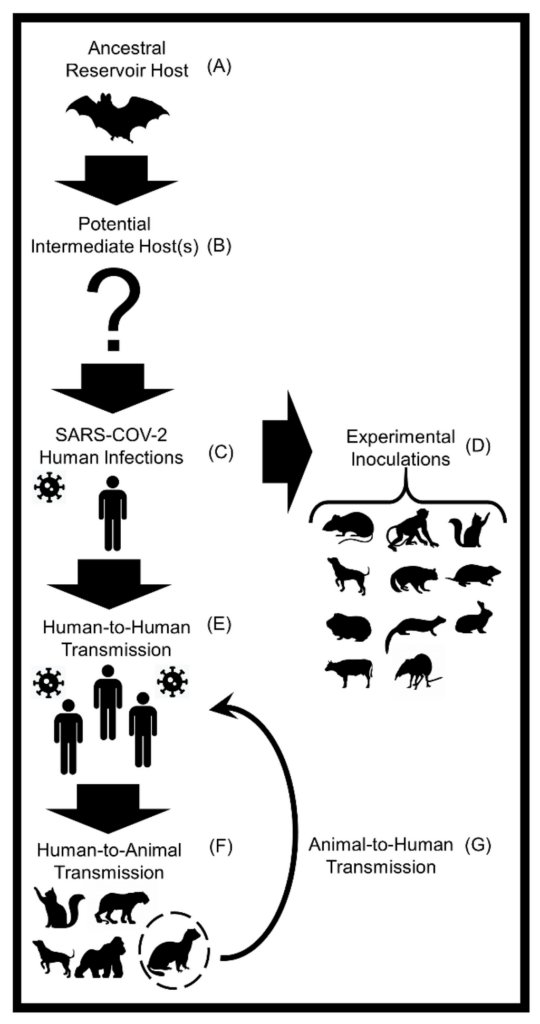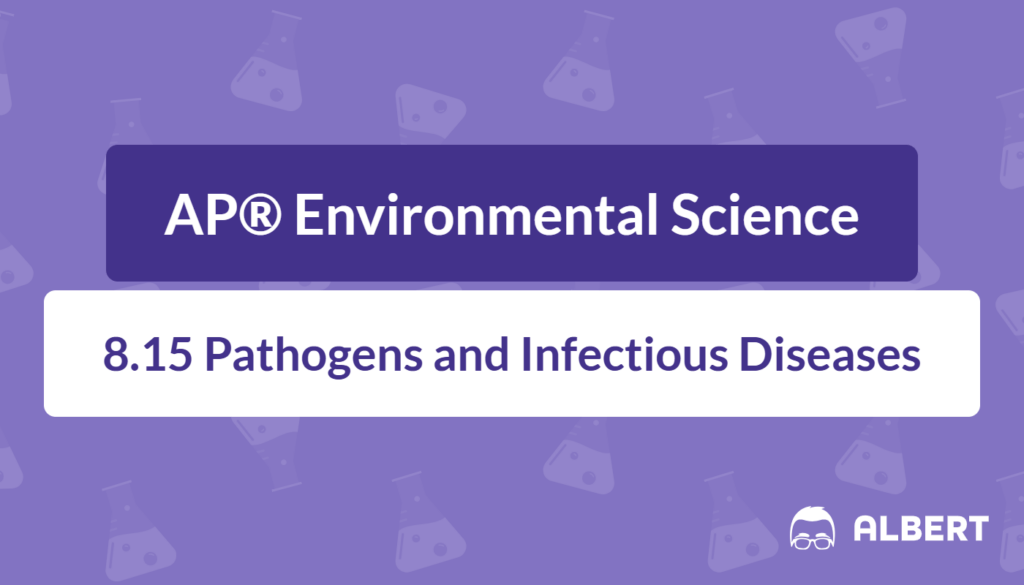What We Review
Introduction
Infectious diseases are illnesses caused by harmful organisms that invade and multiply within the human body. To better understand these illnesses, it is important to define infectious disease as caused by pathogens such as bacteria or viruses. These pathogens often adapt to new environments, which increases their ability to infect larger populations. Moreover, the presence of poor sanitation and limited healthcare access can allow these diseases to spread more rapidly. For students of AP® Environmental Science, understanding pathogens and their transmission pathways is critical for grasping how these disease agents cycle through the environment. Consequently, this article explores various types of pathogens, their vectors, and the conditions that lead to widespread infectious outbreaks.
What are Pathogens?
Pathogens are disease-causing organisms, including bacteria, viruses, parasites, and fungi. They exist in numerous environments and frequently evolve to exploit new opportunities in human hosts. Therefore, their ability to adapt is crucial to understanding why outbreaks can occur in unexpected areas. Pathogens readily change to capitalize on novel human habitats or changes in human behavior.
- Bacterial pathogens: Examples include the bacterium that causes cholera in contaminated water supplies.
- Viral pathogens: Zika virus and West Nile virus both spread rapidly, especially in warmer climates where mosquitoes thrive.
- Parasitic organisms: Malaria is a well-known parasitic disease triggered by a specific parasite carried in mosquitoes.
- Fungal infections: Certain fungi infect humans, though these usually receive less attention than bacterial or viral pathogens.
Step-by-Step Example: How Pathogens Adapt
- A bacterial population enters a new region with inadequate sanitary waste removal.
- The bacteria encounter human hosts with little to no immunity, making infection more likely.
- The bacteria reproduce quickly, taking advantage of scarce healthcare resources.
- Finally, the bacteria harness any local vectors or contaminated resources to further spread the disease.
Vectors: The Highway for Diseases
Vectors are living organisms (often insects) that spread pathogens from one host to another. Although many pathogens move through air, water, or direct contact, vectors can drastically speed up disease transmission. In areas where vector populations are dense, infections may escalate into epidemics because large numbers of people become exposed quickly.
Common Vectors
- Mosquitoes: Responsible for malaria, Zika virus, and West Nile virus transmission.
- Rodents: Known carriers of plague. Fleas from infected rodents can bite humans, thus transferring the plague bacteria.
Step-by-Step Example: How Malaria Is Transmitted by Mosquitoes
- A female mosquito feeds on the blood of an individual infected with the malaria parasite.
- The parasite undergoes part of its life cycle inside the mosquito.
- The same mosquito then feeds on another person, injecting the parasite into the new host’s bloodstream.
- The parasite completes its development, causing symptoms such as fever and chills in the infected individual.
Because malaria requires mosquitoes for this cycle, controlling mosquito populations can greatly reduce disease prevalence. However, rising temperatures and shifting climate zones have expanded mosquito habitats, placing more communities at risk.
Conditions Leading to Infectious Diseases
In low-income regions where sanitary waste removal is lacking, it is common to find contaminated water supplies. These environments provide ample opportunities for pathogens to thrive. Areas affected by poverty often lack the technology and resources to ensure reliable water treatment and waste disposal. Consequently, infectious diseases can spread rapidly under these circumstances.
Example: Cholera Outbreak in Impoverished Areas
Cholera, caused by the bacterium Vibrio cholerae, typically surfaces in places with poorly managed sewage systems. If waste water and drinking water intermingle, cholera bacteria can infect large numbers of people quickly. Symptoms include severe diarrhea and dehydration, which may become fatal without timely treatment. However, improving water infrastructure and empowering local communities to manage sewage can drastically cut transmission rates.
Major Infectious Diseases
Many diseases illustrate how pathogens spread and persist in different settings. Several examples stand out because they highlight the importance of density-dependent factors, environmental conditions, and healthcare practices.
- Plague:
- Plague is caused by a bacterium typically found in rodents and transmitted to humans via flea bites. Historically, plague outbreaks have devastated populations, partly due to cramped living conditions that encouraged flea-and-rodent contact. Plague can also be transmitted when individuals handle infected tissues.
- Tuberculosis (TB):
- TB is a bacterial infection that primarily targets the lungs. It moves from person to person via airborne droplets containing the bacteria, often in poorly ventilated spaces. Therefore, crowded living conditions can significantly raise TB transmission rates. EIN-3.D.6 underscores the importance of respiratory precautions, like wearing masks and improving air circulation.
- Malaria:
- As previously described, malaria is a parasitic disease frequently found in sub-Saharan Africa. It is caused by protozoan parasites carried by certain mosquito species. Because mosquitoes flourish in warm, humid areas, malaria is especially prevalent near tropical climates.
- West Nile Virus:
- This virus spreads through mosquito bites and can infect birds, humans, and other mammals. Although infection might occur without obvious symptoms, severe cases can lead to neurological problems. Therefore, limiting mosquito exposure remains key for prevention.
- Zika Virus:
- Zika is transmitted through mosquito bites and, uniquely, can also spread via sexual contact. Symptoms vary from mild fever to potential birth defects when pregnant individuals become infected. This disease demonstrates the multifaceted nature of viral transmission.
- SARS (Severe Acute Respiratory Syndrome) and MERS (Middle East Respiratory Syndrome):
- Both are viral infections that cause pneumonia-like symptoms. SARS spreads mainly by inhaling or touching infected fluids, whereas MERS typically transfers from infected animals to humans before circulating in close human contact.
- Cholera:
- As noted, cholera arises from drinking water containing Vibrio cholerae bacteria. Poor infrastructure and a lack of sanitary waste removal often facilitate its spread.

Step-by-Step Example: Understanding Tuberculosis Infection Cycle
- An infected individual coughs or sneezes, releasing droplets containing TB bacteria.
- People nearby inhale these particles, allowing bacteria to enter their lungs.
- The bacteria sometimes remain dormant for months or years.
- If the bacteria become active, they multiply in lung tissue and cause symptoms such as persistent cough, fever, and weight loss.
- Prolonged exposure to active TB cases increases infection risk for others.
Prompt detection and adequate treatment can curb the spread of TB. However, in regions without comprehensive healthcare, TB can remain undiagnosed and extend through entire communities.
Climate Change and Infectious Diseases
Rising global temperatures are altering the distribution of disease-carrying vectors. Warmer conditions allow mosquitoes to survive in areas that were previously too cold. Pathogens and their vectors are spreading into regions that have not historically recorded these diseases, often catching local healthcare systems unprepared. For instance, Zika virus outbreaks have been detected in countries previously considered low risk, partly because the changing climate enables mosquitoes to expand their range.
In addition, extreme weather events like floods and hurricanes can damage water infrastructure, creating new breeding grounds for microorganisms. Consequently, controlling infectious diseases will likely involve strategies that address both local conditions and broader climate changes.
Preventing the Spread of Infectious Diseases
Effective disease prevention requires a combination of sanitation, education, healthcare services, and policy initiatives. To enhance community resilience, experts often recommend strategies that address underlying risk factors such as poverty, population density, and environmental changes.
- Sanitation and Clean Water: Access to safe drinking water and proper sewage disposal drastically decreases exposure to waterborne pathogens like cholera.
- Vaccines: Immunizations significantly reduce the spread of diseases such as tuberculosis and certain viral infections.
- Vector Control: Strategies include indoor spraying, elimination of standing water, and the use of bed nets to prevent mosquito bites.
- Public Health Measures: Early detection programs, contact tracing, and quarantine protocols all help identify and isolate infectious cases.
By combining these approaches, communities can lower transmission rates and limit large-scale outbreaks. Moreover, consistent investments in healthcare infrastructure ensure that new or emerging pathogens are identified swiftly, thereby reducing the risk of widespread disease.
Conclusion
Pathogens and infectious diseases remain significant concerns for societies worldwide, especially as human populations expand into new environments and climate zones shift. Because diseases like plague, tuberculosis, and cholera have long histories of affecting human health, recent threats such as Zika and West Nile virus underscore the need to be vigilant. Understanding how pathogens adapt, how vectors facilitate disease spread, and how socioeconomic conditions shape outbreak patterns is essential. Ultimately, a combination of improved sanitation, medical interventions, and proactive community efforts can help protect public health in a changing world.
Important Vocabulary
- Pathogen: An organism (bacteria, virus, fungus, or parasite) that causes disease in its host.
- Vector: An organism, such as a mosquito or flea, that transmits pathogens from one host to another.
- Infectious Disease: An illness caused by a pathogen that tends to spread among individuals or groups.
- Sanitary Waste Removal: Proper disposal of waste—especially human waste—to prevent contamination of water and land.
- Cholera: A bacterial disease often contracted through contaminated water, causing severe diarrhea and dehydration.
Ensuring familiarity with these key terms supports a deeper understanding of how environmental factors interact with disease transmission. Above all, attention to sanitation, public health infrastructure, and climate impacts can mitigate the spread of harmful pathogens in both urban and rural settings.
Sharpen Your Skills for AP® Environmental Science
Are you preparing for the AP® Environmental Science test? We’ve got you covered! Try our review articles designed to help you confidently tackle real-world AP® Environmental Science problems. You’ll find everything you need to succeed, from quick tips to detailed strategies. Start exploring now!
- AP® Environmental Science: 8.12 Review
- AP® Environmental Science: 8.13 Review
- AP® Environmental Science: 8.14 Review
Need help preparing for your AP® Environmental Science exam?
Albert has hundreds of AP® Environmental Science practice questions, free response, and full-length practice tests to try out.








